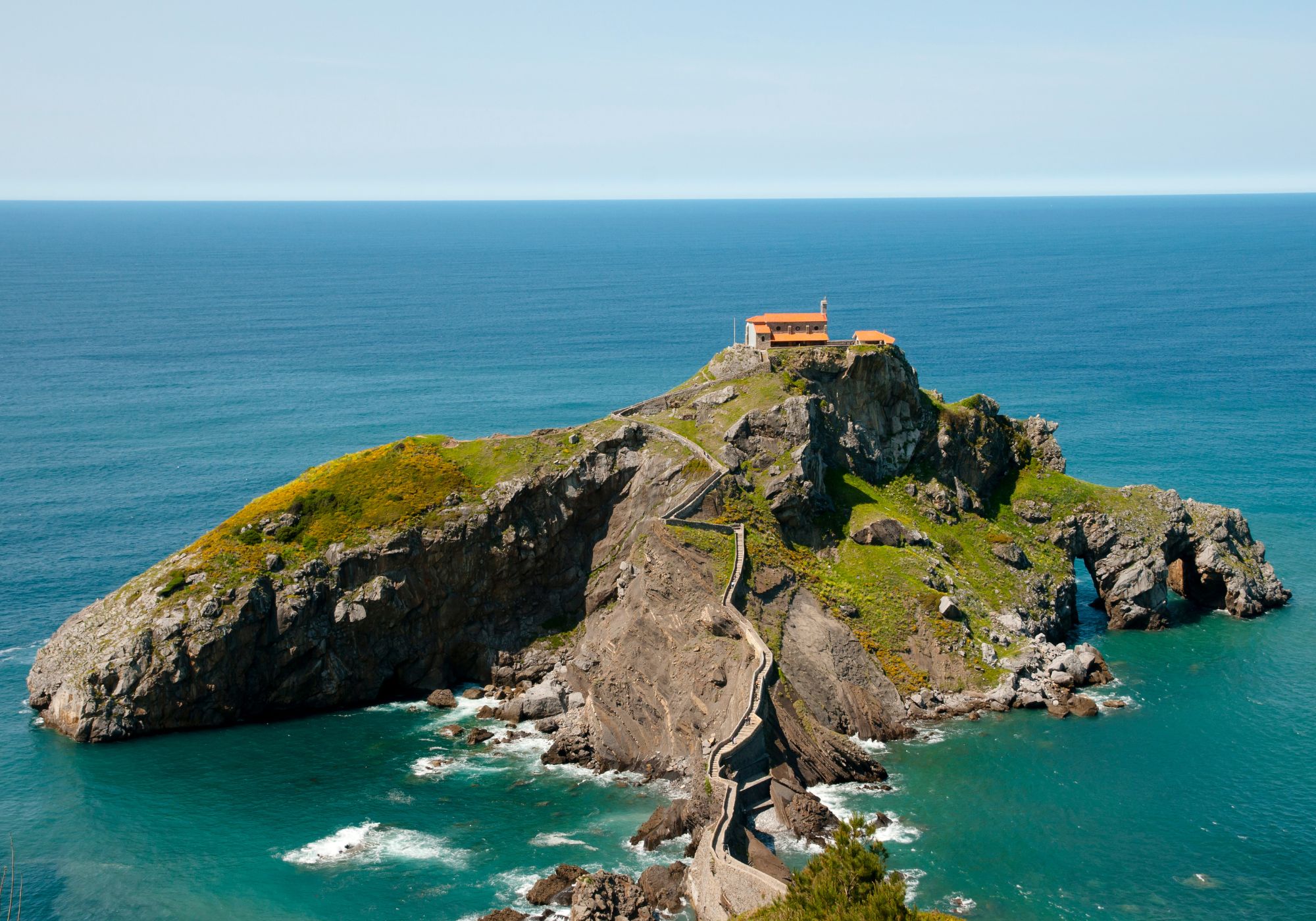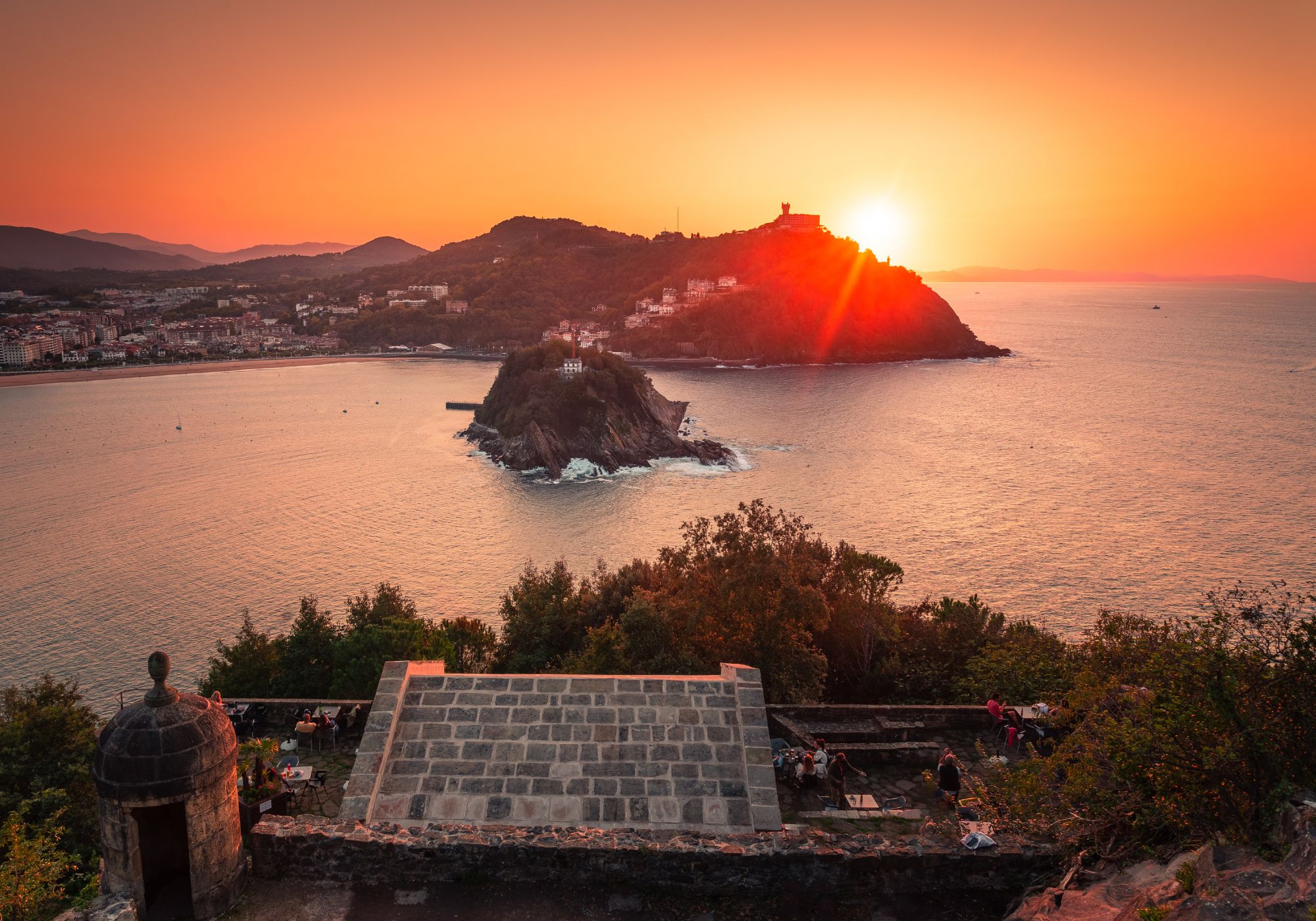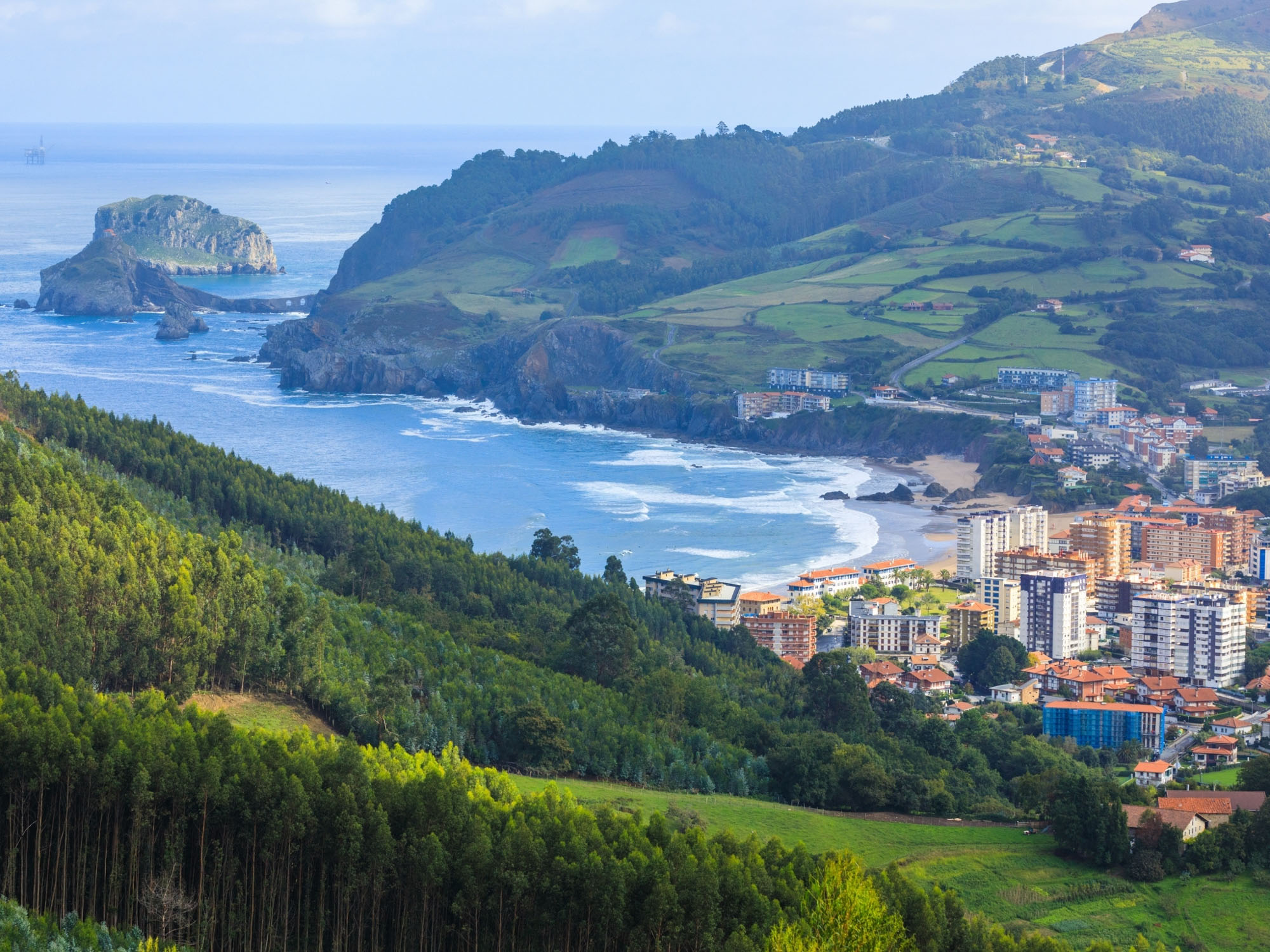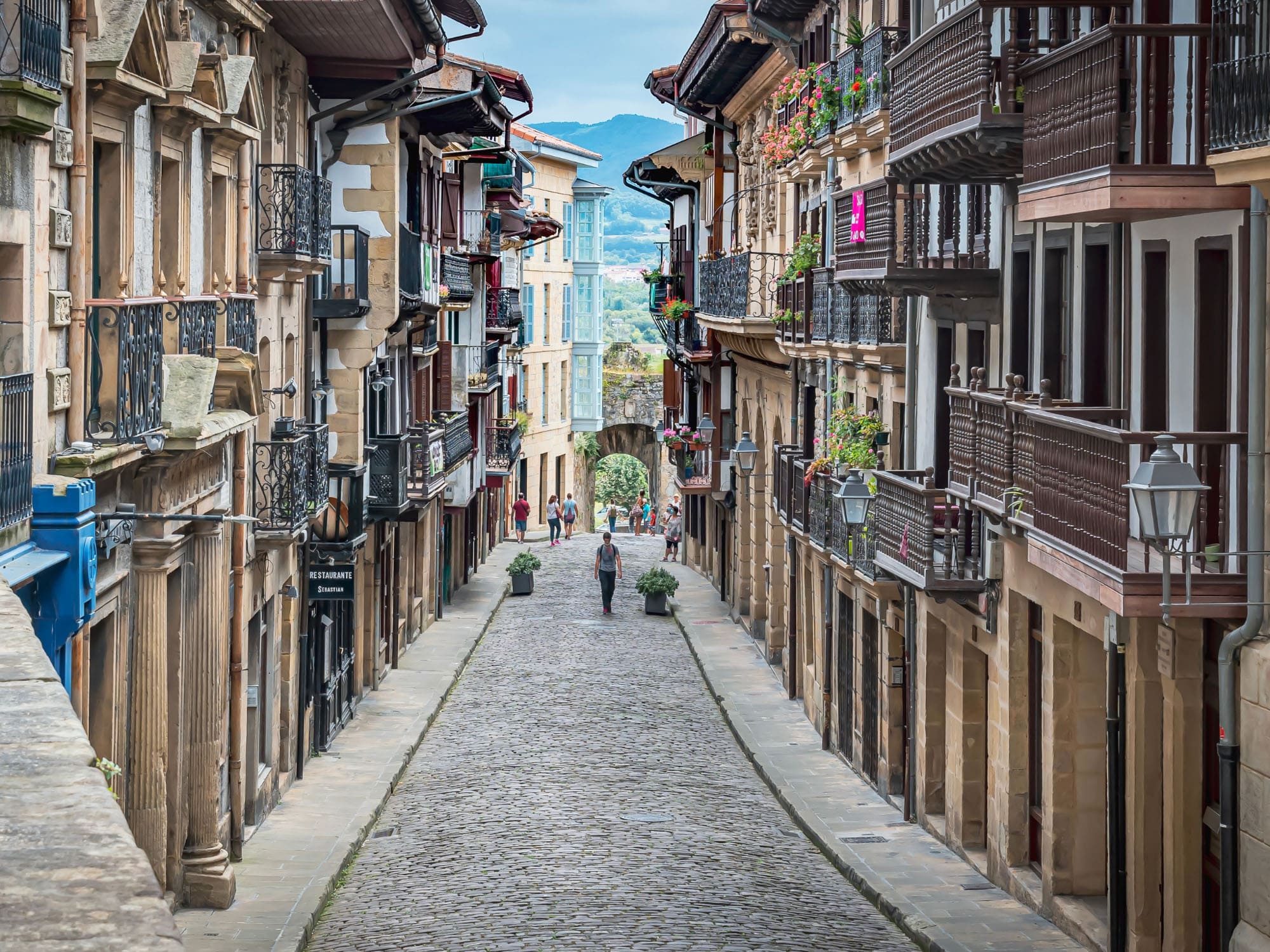Map Spanish Basque Country
The province of Guipuscoa
Situated at the extreme north-east of Spain’s Atlantic coast, bordered to the south by the province of Alava and to the east by Navarre, Guipuscoa is the smallest region of the Spanish Basque Country at 1,980 km². Its coastline stretches for 86 km and offers spectacular scenery with magnificent beaches, steep cliffs and charming fishing villages such as Getaria, Zarautz, Mutriku or Fontarrabie, which are a must-see. But the ultimate jewel of the province is undeniably the Bay of La Concha in San Sebastián, which is also its capital. Nestled in the gentle, green hills facing the ocean, its two beaches of golden sand and turquoise water light up the coastline. The town also boasts a world-renowned gastronomic culture. The province of Guipuscoa is the most mountainous of the 4, and hiking enthusiasts will love the Sierra de Aralar nature park, with its remarkable flora and fauna. Here too, gastronomy is not to be outdone, with visits to Basque farms producing local products such as ewe’s milk cheese and Basque cider. Pretty, typical towns like Tolosa and Ataun are also worth a visit for their authentic atmosphere.

The province of Navarre
To the east of the province of Guipuscoa lies Navarre, with the Pyrenees to the north and the Ebro valley to the south, and is characterized by strongly contrasting landscapes. At 9,801 km², it is the largest in the Spanish Basque Country. It’s a rich, authentic territory where history, culture, nature and gastronomy blend harmoniously. Pamplona, its capital, is world-famous for its San Fermin festivities, where some 3 million people gather for a week of shows, wild bullfights, fireworks and other entertainment. But Navarre has much more to offer its visitors, with the Arabayún and Lumbier canyons, Olite and its Gothic-style castle, the Artajona circle, typical villages such as Ujué and Ochagavìa, and the Valdorba valley, impossible to get bored. Its three protected natural parks – Parque Natural de Bertiz, Parque Natural de Urbasa-Andia and Parque Natural de Bardenas Reales – promise fabulous hiking. Here, too, gastronomy is proudly displayed with locally produced products: Roncal and Idiazabal D.O.C. cheeses, roast lamb, chistorra (a slightly spicy sausage) and the delicious Navarrese liqueur, Pacharan.
The province of Alava
Covering an area of 3,047 km², Alava is the second largest province in the Basque Country. It is located in the west of the Spanish Basque Country and has no coastline. Its capital is the beautiful city of Vitoria-Gasteiz Gasteiz, with its remarkable medieval historic center. Alava’s most emblematic region is undoubtedly Rioja Alavesa, in the south of the province. Come and discover its wonderful wine-growing and cultural heritage. Dotted with medieval-style villages, wine cellars and, of course, vineyards, the landscape is magnificent. Come and taste the superb wines produced in the no less remarkable cellars, such as the Ysios cellar, designed by the architect Santiago Calatrava, or the Marquès de Riscal cellar designed by Frank Gehry, who is credited with the famous Guggenheim Museum. On a different note, other remarkable sites include the Salinas de Añana salt valley, with its 6,500-year history and one of the oldest salt factories in the world, and the Roman site of Iruña-Veleia, which can be visited all year round.
The province of Vizcaya
Situated above Alava in the west of Guipuscoa, the province of Vizcaya’s capital is the city of Bilbao, which boasts a number of major assets, the first of which is the Guggenheim Museum, instantly recognizable with its futuristic arabesque architecture. Since its opening in 1997, the city has enjoyed a fantastic economic and tourism boom. The province boasts 150 km of coastline, with some thirty beautiful beaches and fabulous landscapes, with remarkable sites such as the island of San Juan de Gaztelugatxe and the Urdaibai biosphere reserve a must-see. Don’t miss a visit to the town of Guernica, in memory of the Spanish Civil War, when it was almost entirely razed to the ground by Italian and German bombing raids. A little further inland, you’ll find medieval villages such as Elorrio, Durango, Balmaseda, Orduña and Otxandio, all of which are architectural marvels worth a visit. The natural parks of Arriata Valley and Encartaciones or Duranguesado are an open-air breeding ground for the culture and historical heritage of the province of Vizcaya.
On a camping holiday in the Spanish Basque Country, you’ll find a multitude of beautiful places to visit. It’s a beautiful region that’s well worth a visit for a rewarding, gourmet and sporting vacation.




